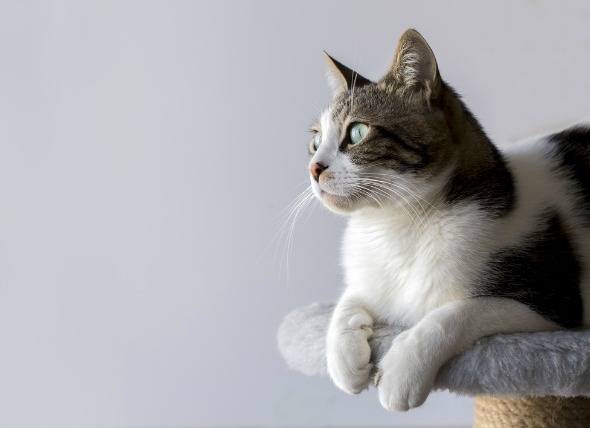

Crystalluria is a medical condition where crystals are expelled into the urine. The detection of urinary crystals is not synonymous with kidney stones or the clinical signs associated with them, nor is detection of urine crystals irrefutable evidence of a stone-forming tendency, but there is some association with an increased risk for kidney stones in animals that are afflicted with crystalluria, and crystals in the urine can be an indication of kidney stones (also referred to as renal stones). Crystals form only in urine that is, or recently has been, supersaturated with crystallogenic substances.
Proper identification and interpretation of urine crystals is important for determining a medical strategy for treating the condition, since certain crystal types may indicate an underlying disease. Evaluation of urine crystals may aid in (1) detection of the disorders that predispose the animal to stone formation, (2) estimation of the mineral composition of the stones, and (3) evaluation of the effectiveness of the medical procedures initiated to dissolve or prevent the stones.
Crystalluria in animals with anatomically and functionally normal urinary tracts is usually harmless because the crystals are eliminated before they grow large enough to interfere with normal urinary function. Even so, they represent a risk factor for kidney stones.
Crystals that form in the urine following elimination or removal of urine from the patient often are of little clinical importance (i.e., crystals formed in the urine after leaving the body). Identification of crystals that have formed in vitro (in a lab environment) will not justify therapy. Situations that will require further follow-up are instances where some types of crystals are detected in patients without symptoms (asymptomatic); when large aggregates of crystals (e.g., calcium oxalate or magnesium ammonium phosphate) in apparently normal individuals are detected; or, when detection of any form of crystals in fresh urine collected from patients with confirmed kidney stones may have diagnostic, prognostic, or therapeutic importance.
Breeds that are prone to calcium oxalate crystals in the urine are Burmese, Himalayan, and Persian cats.
The sole symptom of crystalluria is the presence of detectable crystals in freshly expelled urine. Other related symptoms are those caused by concomitant kidney stones.
X-ray or ultrasound may be able to detect some stones, but urinalysis will be the major tool for analysis of crystalluria.
Treatment will involve managing clinically important crystalluria by eliminating or controlling the underlying cause(s) or associated risk factors. In addition, minimizing crystalluria by increasing urine volume, encouraging complete and frequent voiding of urine, modifying the diet, and in some instances by appropriate drug therapy may be part of the treatment plan. Modifying pH levels may also be called for.
Your veterinarian will want to analyze your cat's urine after initial treatment to determine if crystalluria is still present, since persistent crystalluria may contribute to the formation and growth of kidney stones. In addition, chronic crystalluria may solidify crystalline-matrix plugs, resulting in a urethral obstruction.
 Head Pressing in Cats
Pressing the Head Against Objects in Cats
Head pr
Head Pressing in Cats
Pressing the Head Against Objects in Cats
Head pr
 Can Cats Heal An Injury or Cure Illness?
A Cat Gives More Than it Receives &
Can Cats Heal An Injury or Cure Illness?
A Cat Gives More Than it Receives &
 What Kind Of Human Food Can Cats Eat?
People Food For CatsMany cat
What Kind Of Human Food Can Cats Eat?
People Food For CatsMany cat
 Extreme Fear and Anxiety in Cats
Fears, Phobias, and Anxieties in Cats
A phobia is
Extreme Fear and Anxiety in Cats
Fears, Phobias, and Anxieties in Cats
A phobia is
 Mast Cell Tumor (Mastocytoma) in Cats
Connective Tissue Tumors in Cats
Mast cell tumors
Mast Cell Tumor (Mastocytoma) in Cats
Connective Tissue Tumors in Cats
Mast cell tumors
Copyright © 2005-2016 Pet Information All Rights Reserved
Contact us: www162date@outlook.com